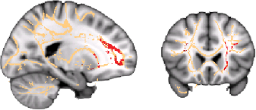Current Projects
1. How do we make rapid decisions? – The deciding brain

On a foggy night, you drive up to a traffic light. Visibility is poor and you can hardly see if the signal is green or red. On such scenario, making the right decision is critical.
Our brain has an amazing ability to conduct such tasks rapidly and accurately. We examine how the brain integrates information over a short time period during decision-making. The integration of information is an essential process. It reduces the noise in sensory systems and thereby facilitates more accurate choices. We use computational models at different levels of complexity to account for behavioural measures and neuroimaging data (fMRI and MEG/EEG). This work helps us understand different roles of brain regions during the decision processes, and reveals the information flow from perception to action.
2. How do we choose between equal options? – The volitional brain

Apple or orange, cash or card: we can intentionally choose between these options in order to fulfil our goals and desires, even when all the options are similar and not associated with explicit rewards. The notion of intentional decision covers this fundamental, yet poorly understood ability to our lives: acting voluntarily based on internal intention.
How do we make decisions based on internal intention? How do internal and external factors influence intentional decisions? Can we ever predict one’s intention? We study the computational, neuroanatomical and neurochemical mechanisms of intentional decisions.
3. When and how can things go wrong? – The diseased brain

We often take our basic cognitive capacities for granted until diseases take it away from us. In patients with neurodegenerative diseases, the inability of appropriate behaviour can manifest as impulsivity, apathy, and perseveration that affects patients’ quality of life severely, and exacerbate carer burden.
In collaboration with clinical scientists, we use multimodal brain imaging and computational simulation as tools, to provide a mechanistic understanding of brain alternations and cognitive decline in patients with Alzheimer’s and Parkinson’s diseases. We also examine healthy young adults with heightened genetic risks of age-related cognitive decline, decades before any symptom becomes clinically apparent.
